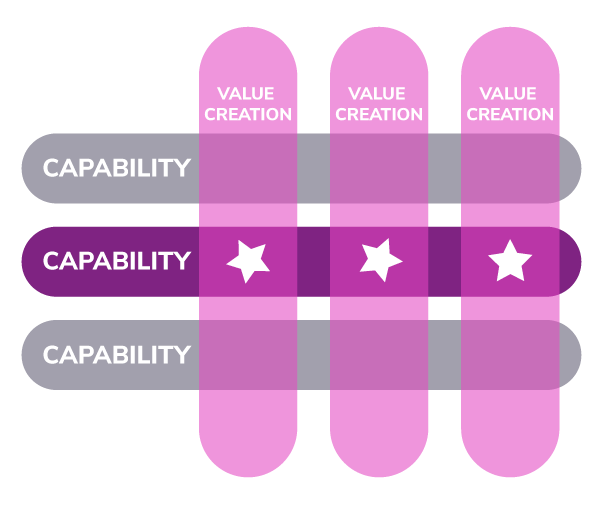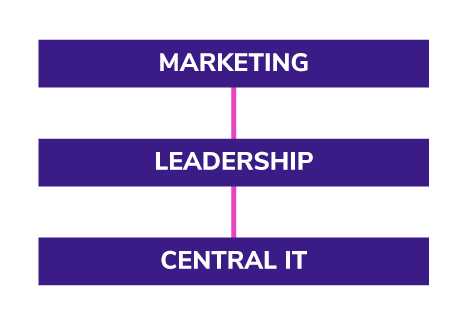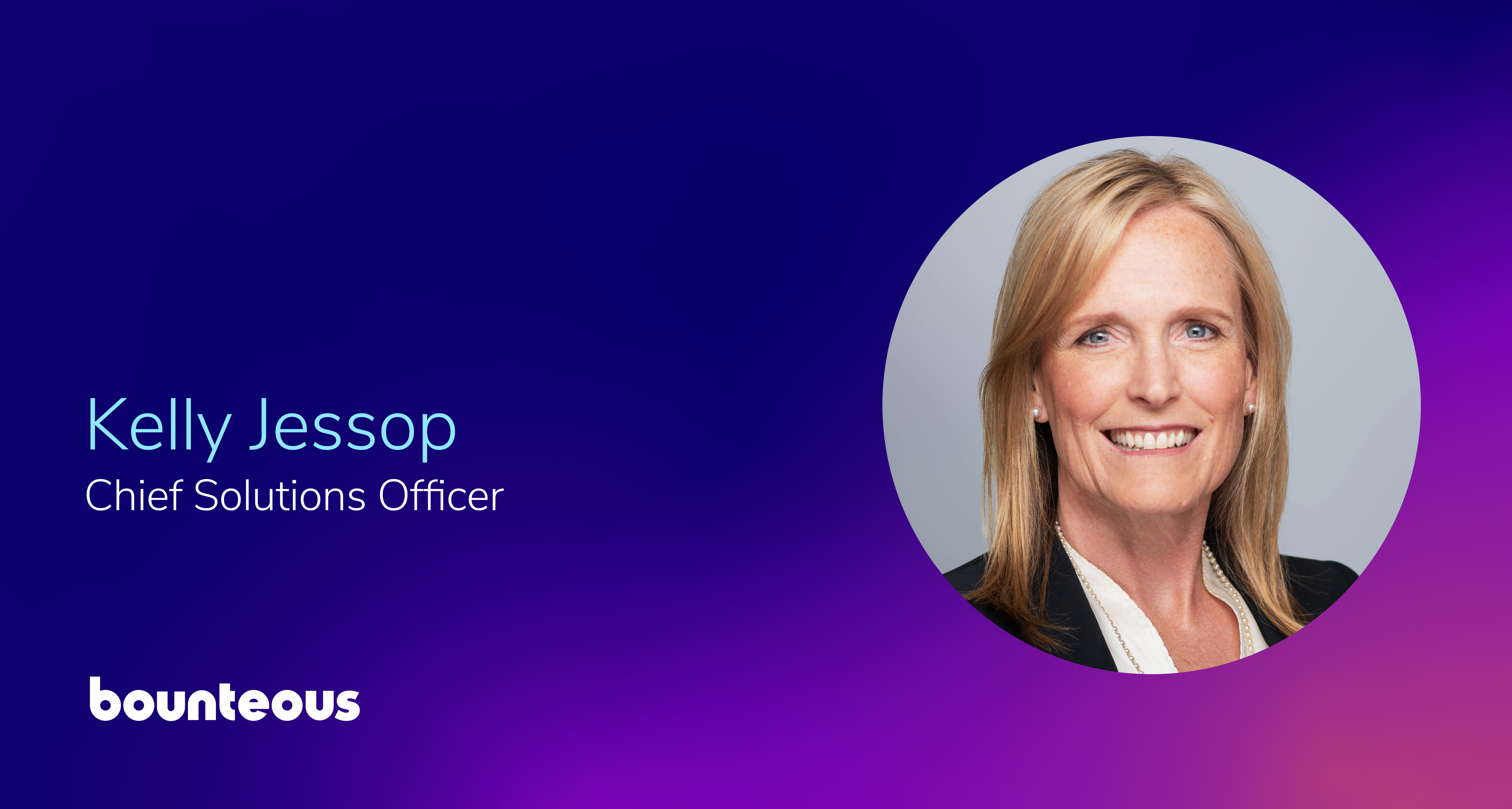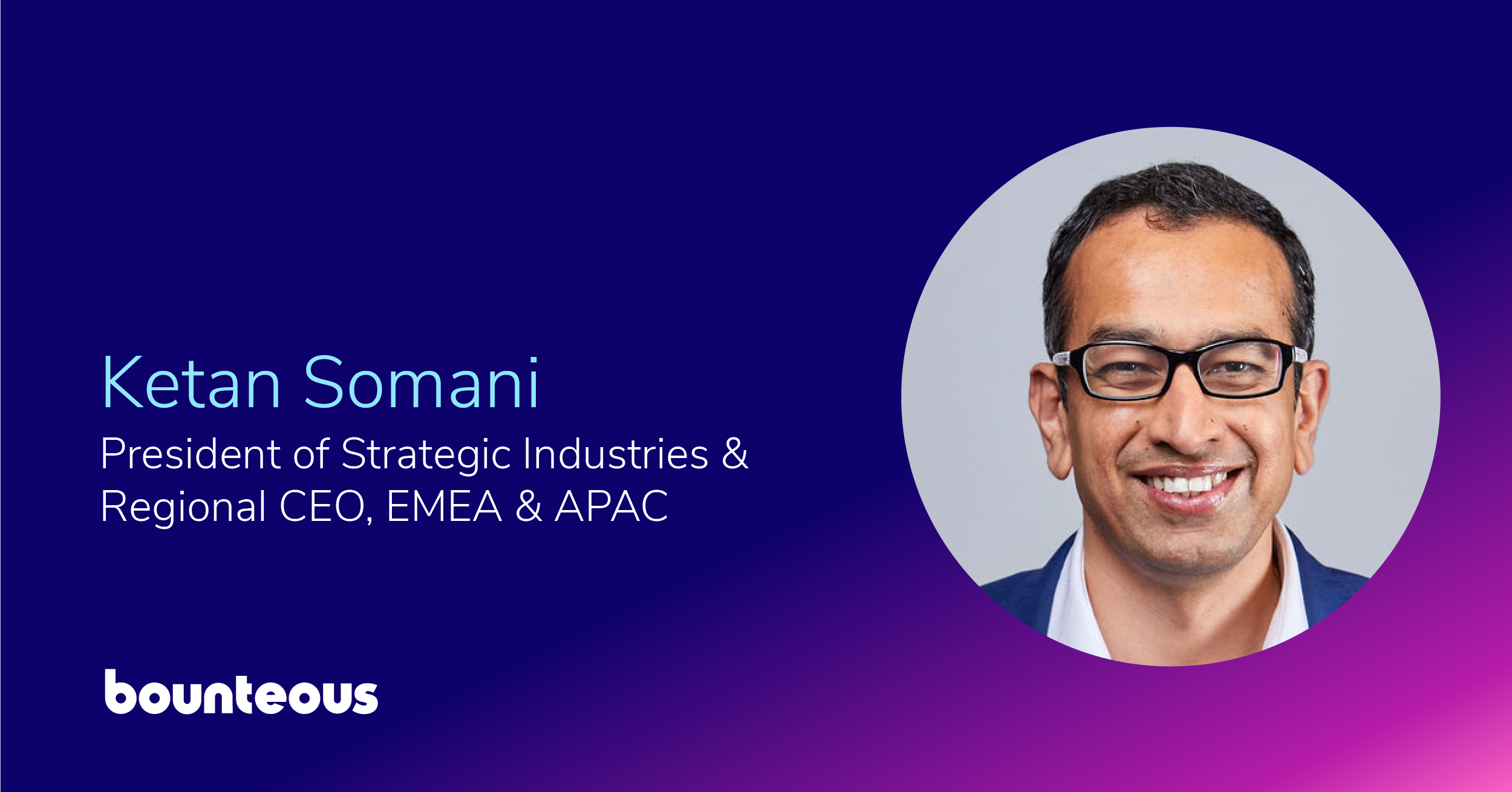Experience Operations: Unlocking the Value of Composable Architecture with Co‑Innovation

“Adding more people will not speed things up.”
- A customer from a top 5 apparel brand
When the technology and process fall in place for a team, they can reach a hyperproductive state where they can realize creativity, velocity, and quality. At Bounteous, we call it Digital Flow, and through a process called Co-Innovation, we help our clients find their flow.
Digital experiences have become complex and headless and composable technologies are advancing rapidly. Tailored customer experiences are a competitive advantage and to deliver these experiences at scale, we must update how we do things or risk falling behind.
How Do We Prepare For Disruption?
To remain competitive, we need to foster a culture and an operational cadence that promotes experimentation, which we like to call reaching experimentation velocity. In order to reach experimentation velocity, we need to build journeys across channels, and the deadlines to do so are getting tighter. The technologies required to deliver these experiences are changing, so we must support an ever-expanding portfolio of capabilities. The layers of skills and technologies needed to deliver connected experiences at scale are mounting, and they challenge us in reaching an operational flow. We need fluid processes that facilitate collaborative teams while avoiding technical and procedural obstacles that will slow us down.
The Experience Advantage
To succeed, we must deliver remarkable experiences to our customers and employees. The challenge is the technologies we use to digitize experiences are evolving faster than our delivery process. To keep up with expectations, we must invest in accumulating long-term business value and avoid short-sighted fixes like finding “unicorn” out-of-the-box solutions. We can prevent some of the common problems by taking a top-down approach:
- Define the business value of both customer and employee digital experiences
- Evaluate the economic impact of the current digital stack on IT and operations
- Identify the standard workflows that business units need to execute efficiently and effectively
- Define the underlying capabilities necessary to support business workflows
Solve The People Puzzle
Organizations traditionally have teams to maintain different channels, each with its own technology set. This siloed approach is efficient but creates fundamental hurdles to creating cross-channel experiences. To deliver connected experiences at scale, we need to establish lateral communication between teams and the technologies that support them.
Working across teams, we find ourselves in a matrixed structure. Matrixed organizations, by definition, break down silos and promote lateral coordination. They also require a higher level of communication to avoid conflict. But the amount of communication needed to keep everyone in the loop in a matrixed structure is often a velocity-killer.
Interestingly, the Helix model is well aligned with composable architecture. It allows us to create a modular portfolio of stable tools in a formalized framework. We can think of capabilities as a standardized pallet of tools we define for our business. They are intuitive and long-lasting, using familiar business terminology and technical best practices. The value-creation vertical is a collection of business capabilities and logic. We can establish efficient processes that facilitate communication between groups in a predictable way. We also avoid negative stereotypes of a matrix organization–large slow meetings with lots of repetition to ensure everyone is in the loop.
But the structure alone will not improve our operational flow. We need processes and tools that let people and teams focus on their areas of expertise while evolving as an organization.
- Leadership makes informed decisions because they have visibility into capabilities and costs
- Business units can get things done without large interdepartmental meetings or a handful of indispensable unicorn employees who act as a bridge between departments
- Marketing has a pallet of tools to execute connected campaigns and has a predictable way to request new capabilities
- Central IT has well-documented APIs they can manage, a process for extending APIs, reasonable SLAs, and a pattern to optimize and migrate APIs at scale
Combining composable architecture and a helix structure gives us predictable technical velocity and business agility. But how do we structure the collaboration between departments and translate the business needs of different groups, so we know what to build?
Experience Operations Will Be Your Guide
Experience Operations (XOps) is a technical role that fosters collaboration between the business and technical teams to deliver digital experiences. With the technology piece in place, we must establish efficient processes for experience production, platform evolution, and maintenance. The XOps role is a player/coach facilitating communication between IT and the people creating experiences.
Experience Operations acts as the Rosetta Stone connecting teams. They develop and maintain the materials used to communicate across groups and ensure they can work efficiently by streamlining processes.
Experience operations facilitate a few areas.
Experience Production
The primary goal for XOps is to deliver great user experiences at scale. Teams need to optimize productivity across groups and leverage platform capabilities effectively. By removing obstacles, we can efficiently produce experience and accelerate delivery.
The following are some of the most important tactics:
Optimize workflows across teams - With a unified platform, teams can work together seamlessly and use shared components and assets better. Teams can also utilize shared tools and processes like automated testing frameworks.
Leverage platform capabilities - Provide capabilities that help producers create higher quality experiences faster through standard code libraries, frameworks, and reusable UI components.
Increase development velocity - A solid framework provides higher-level abstractions that save time coding basic functionality and leaves more time to make enhancements and act on customer feedback.
Ensure consistent user experience - Consistent UI ensures that users see the same look, feel, and behavior regardless of where they are in an application or website.
Content design is at the core of user experience. Optimizing productivity across groups and effectively leveraging platform capabilities accelerates the process of delivering experiences. Success metrics are quality, efficiency, and speed of experience delivery. People delivering experiences can take a content-first approach, focusing on content and design, rather than getting code implemented.
Platform Evolution
We are constantly looking for ways to improve processes and capabilities, and enhancements and optimizations that will accelerate and enhance the production of customer experiences. We need to create a culture of improvement around continuous enhancement. Agile development practices lend themselves well to managing the request pipeline. These processes allow us to collect and prioritize enhancement requests transparently. These strategies will enable us to scale predictably across an organization.
Platform Oversight
The reliability of the infrastructure is fundamental to the success of the platform. Again, we are looking for predictability and scalability that will allow us to scale on demand. We need to have the DevOps and reporting processes in place to give us the uptime and performance required as well as the flexibility to add functionality and scale quickly.
Establishing Experience Operations
We have the technology to deliver next-level customer experiences, but we must cultivate processes to support and scale them. Experience Operations focus on designing and maintaining the operational processes that directly improve the employee experience and– indirectly–the customer experience. Establishing Experience Operations as a practice is a Co-Innovation initiative that will help you reach a digital flow state.
Providing compelling customer experiences is a clear competitive advantage and improves revenue. Whether updating existing experiences or creating a new one, the effective orchestration of people, processes, and best-of-breed technology will provide measurable outcomes.






